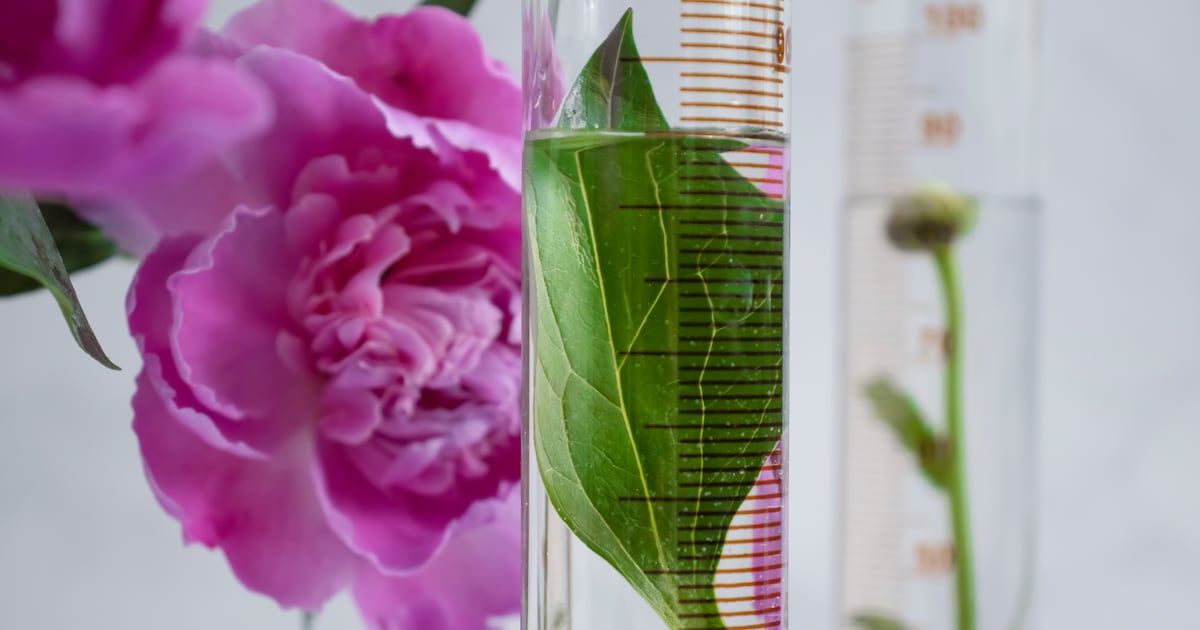In a peer-reviewed study, a team from the University of Phayao and Chulalongkorn University detailed how Peristrophe bivalvis (P. bivalvis), commonly used in traditional medicine and as a food colourant, could be formulated into stable water-in-oil nano-emulsions for cosmetic applications.
The study focused on extracting active compounds from the plant’s leaves and assessing their biological activity and safety. The extracts showed strong antioxidant effects, glycation inhibition, and lipid peroxidation reduction, all of which are essential mechanisms for fighting skin ageing.
Importantly, the plant extracts were also shown to be non-toxic to human fibroblast cells at practical concentrations.
The study marked the first time P. bivalvis had been explored in this context, especially for its incorporation into nano emulsion-based cosmetic systems. The results suggested it could serve as a new natural active ingredient for anti-ageing skin care.
From traditional herb to modern skin care candidate
P. bivalvis (L.) Merr., also known as the magenta plant, is found across tropical regions in Asia and Africa. Traditionally, it has been used to treat conditions like diabetes, hypertension, and skin ailments. In Vietnam and Malaysia, it is used in food and folk medicine, while it serves as a blood tonic in Nigeria.
Despite its widespread use and known pharmacological properties, little has been studied about its use in cosmetics. Given the plant’s history and bioactive profile, the researchers saw an opportunity to evaluate its potential in skin health applications.
They wanted to focus on biological activities that target skin ageing, particularly oxidative stress, glycation, and lipid peroxidation.
High activity and low toxicity
To assess bioactivity, the team prepared extracts using three different solvents — deionised water (WE), 95% ethanol (EE), and 1% hydrochloric acid in 50% ethanol (AE).
The EE extract stood out in several ways. It had the highest phenolic and flavonoid content, key classes of antioxidants. These compounds are widely studied for their skin-protective roles, including scavenging free radicals, reducing inflammation, and stabilising collagen.
In antioxidant testing (DPPH, ABTS, and FRAP assays), EE consistently showed strong performance, particularly in hydrogen atom transfer and electron transfer assays. WE followed closely, showing high activity especially in ABTS-based testing, while AE trailed behind due to lower phenolic content. It showed almost 60% inhibition at 100µg/mL, which was significant and pointed to anti-wrinkle potential.
When tested for lipid peroxidation inhibition — an indicator of protection against cell membrane degradation — EE again ranked highest, followed by WE. All extracts showed dose-dependent activity, which was favourable for controlled formulation development.
Importantly, the EE and WE extracts showed no cytotoxicity on human skin fibroblasts up to 100 µg/mL. AE, however, demonstrated declining cell viability with increasing concentrations, likely due to acid degradation products.
These findings helped the researchers decide which extracts to move forward with in nano-emulsion development, and led them to choose EE and WE for their strong bioactivity and safety profile.
Nano-emulsions enhance delivery and stability
The team developed water-in-oil nano-emulsions to encapsulate the selected extracts.
Nano-emulsions are popular in cosmetic science because they improve active ingredient delivery, skin absorption, and product stability. Their small droplet size and high stability are essential for commercial cosmetic products, as they not only ensure better skin penetration, but also increase shelf life and maintain aesthetic quality.
Using high-shear homogenisation, the researchers created four different formulations with varying ratios of two emulsifiers: PEG-30 dipolyhydroxystearate and polyglyceryl-3 diisostearate.
The best-performing formulation used a 2:1 ratio, which balanced droplet size (under 100nm), low polydispersity index (PDI < 0.3), and high viscosity.
This base nano-emulsion was then used to incorporate the P. bivalvis extracts. The EE-loaded nano-emulsion (NE-EE) had a reddish-orange hue, while the WE-loaded version (NE-WE) was reddish-purple — both colours reflecting the anthocyanin content and pH sensitivity of the plant compounds.
Post-formulation testing showed that particle sizes remained under 150nm, there was no phase separation after 21 days at room temperature, a creamy and homogeneous appearance across storage conditions, and a slight drop in phenolic content after heating and cooling cycles.
While the researchers also observed degradation at higher temperatures, the emulsions remained stable — a key condition for product development.
Next steps
While the current study provides a strong foundation, the researchers acknowledged that more work was needed to standardise the extract and confirm its skin penetration capabilities.
Identifying and quantifying the specific bioactive molecules, such as pelargonidin, cyanidin, and other anthocyanins, will be essential for quality control and regulatory compliance. Moving towards isolation, quantification, and in vivo studies will help ensure consistency and efficacy when this is scaled for commercial use.
The work also highlighted the broader opportunity for using regional plants from South East Asia in global cosmetic markets. As regulatory and consumer scrutiny intensifies, brands are looking for proven efficacy backed by traditional knowledge and scientific validation.
Source: Cosmetics
“Evaluation of Biological Activities and Cytotoxicity of Peristrophe bivalvis (L.) Merr Extracts and Investigation of Its Novel Natural Active Ingredient-Loaded Nanoemulsion and Stability Assessment”
https://doi.org/10.3390/cosmetics12030092
Authors: Panikchar Wichayapreechar, et al.
